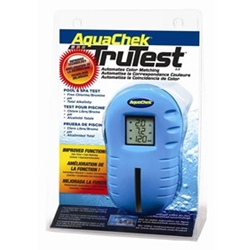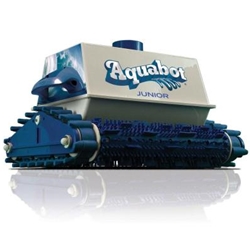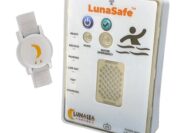Pool opening time means winter is finally over and spring has arrived! There are a series of steps you need to follow to get the backyard pool ready for summer fun, but most homeowners can handle the pool opening process themselves. Here are seven tips on how to do it yourself this season. It’s not hard and you’ll save hundreds of dollars that a professional pool service would charge.
1. Remove water and debris from the top of the pool cover.
Lifting the pool cover is a lot easier and less messy if you first drain off the water that has collected on the cover over the winter. A submersible pool cover pump will greatly speed up this process. Once the water is drained from the cover, clean off as much debris (branches, leaves, etc.) as you can.  Note: The pool cover stays on until after you have adjusted water level and chemistry.
2. Add water to raise level to normal height.
Most pools lose water during the winter. Using a garden hose, top off the water level of the pool to raise it to normal height.
3. Test your pool water for pH, alkalinity, bromine and chlorine.
Testing the chemistry of your pool water is an important step for a clean and safe swimming environment. Do-it-yourself pool and spa test kits that use test strips make water testing easy and accurate. Look for models with digital and automated color matching readouts for best results.
Ideal levels should be: pH – 7.2 to 7.6; total alkalinity – 80 to 120 ppm  (parts per million); bromine – 2.0 to 6.0 ppm; chlorine – 1.0 to 3.0 ppm; and calcium hardness from 150 to 250 ppm.
4. Adjust and balance chemicals.
Based on the analysis you get back, you’ll need to add certain chemicals to adjust the water chemistry to ensure that it’s safe and comfortable for swimming.   These chemicals include soda ash to increase pH; muriatic acid or sodium bisulfate to decrease pH; calcium chloride to adjust calcium hardness; and cyanuric acid to inhibit the sun’s ability to burn off chlorine. Chemicals can be purchased at swimming pool supply stores and many hardware or home and garden stores or online.
5. Wait for the water to clear, and then lift the cover.
Do not remove the pool cover until about a week after adding chemicals. Run the circulation and filtration system continuously and wait for the clarity of the water to clear. The filter should be cleaned daily and you may have to add more chlorine.
Once you can see the pool floor, carefully lift the pool cover off (best done with two people or more). Lay it somewhere flat and protected and brush off dust and debris. Once it has air dried, sprinkle the cover with talcum powder to prevent mold and mildew buildup, fold it loosely and store it in a dry place for the season.
6. Housekeeping and maintenance tasks.
After the cover is removed, it’s time to vacuum all the leaves and debris from the bottom. Consider investing in an automatic pool cleaner to eliminate the chore of manually vacuuming. These robotic cleaning machines roam the floor of the pool scrubbing and sucking up dirt and debris. Look for “self-contained†models that don’t require a hose, booster pump or pool filter system connection. For removing bugs and leaves from the surface of the water, a remote-controlled pool skimmer is another handy device to make cleanup fast and easy.
Throughout the season, keep the filter clean, vacuum the pool at least once a week and test the water chemistry every 2-3 days to maintain sparkling clean water.
7. Inspect your pool safety equipment and make sure it is up to code.
Once you have finished with these pool opening steps — but before scheduling that first pool party — contact your local building and code department to make sure you are in compliance with your municipality’s swimming pool safety laws. Most towns have swimming pool safety laws requiring homeowners to enclose pools and spas with a pool fence at least four feet high with a self-closing, self-latching gate.  Many municipalities also require a pool gate alarm as another layer of protection.
A pool alarm is another line of defense you can add to prevent accidental drowning. To protect children, pets and older non-swimmers, consider a Safety Turtle personal immersion alarm system that sounds a loud alarm when the wearer falls or jumps into water.
For more information and guidelines on swimming pool safety guidelines, check out the Poolsafety.gov website.




